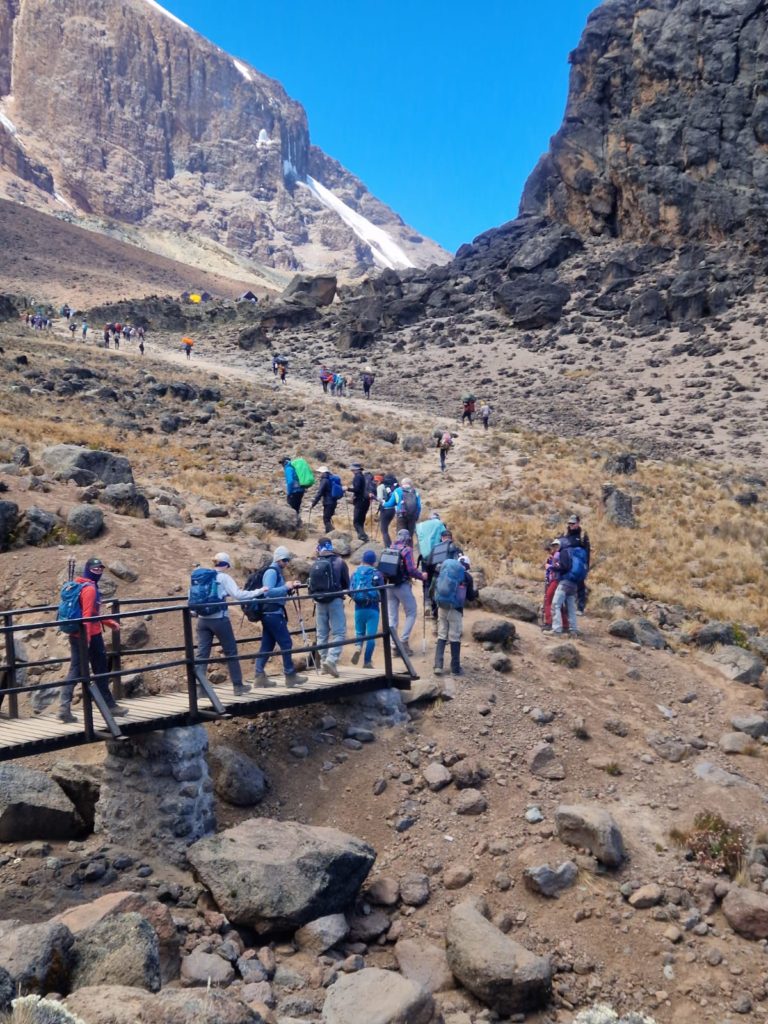Climbing Mount Kilimanjaro is a thrilling adventure, but as you ascend to nearly 6,000 meters, the air becomes thinner, making altitude sickness a real concern for many trekkers. Proper acclimatization is the key to a successful and enjoyable summit. In this blog, we’ll explain what altitude sickness is, how to avoid it, and why acclimatization is crucial for your climb.
What is Altitude Sickness?
Altitude sickness, also known as acute mountain sickness (AMS), occurs when your body struggles to adapt to lower oxygen levels at high altitudes. Common symptoms include headaches, nausea, dizziness, and fatigue. In severe cases, it can lead to more serious conditions like high-altitude pulmonary edema (HAPE) or high-altitude cerebral edema (HACE), which require immediate medical attention.
How to Avoid Altitude Sickness
The best way to prevent altitude sickness is to give your body time to adjust to the increasing altitude. Here are some essential tips to ensure proper acclimatization during your Kilimanjaro trek:
- Choose a Longer Route Opt for longer routes like Lemosho or Machame, which allow more time for acclimatization. These routes gradually increase in altitude, giving your body time to adjust and decreasing the risk of altitude sickness.
- Follow the “Pole Pole” Principle In Swahili, “pole pole” means “slowly, slowly.” This is a key principle on Kilimanjaro. Climbing too quickly doesn’t give your body enough time to adapt to the altitude, so it’s important to pace yourself. Your guides will ensure that you move slowly, even when you feel full of energy.
- Stay Hydrated Drinking plenty of water is vital. Dehydration makes it harder for your body to acclimatize, so aim to drink at least 3 liters of water a day. Electrolyte drinks can also help maintain your energy levels and hydration.
- Take Acclimatization Breaks On some routes, your guides will schedule acclimatization hikes. These involve climbing to a higher elevation during the day and descending to a lower altitude to sleep. This “climb high, sleep low” technique helps your body adjust more effectively.
- Monitor Your Health Pay close attention to your body. If you start feeling symptoms of altitude sickness, inform your guide immediately. Headaches, dizziness, and nausea are early signs, and your guide can adjust the pace or arrange a rest day if needed. It’s important to prioritize your health over speed.
- Consider Taking Medication Some climbers take medication like Diamox (Acetazolamide) to help prevent altitude sickness. This medication helps your body adjust more quickly to high altitudes. Consult with your doctor before the trip to see if this option is right for you.
The Importance of Professional Guides
At African Peaks Tours, our experienced guides are trained in recognizing and managing altitude sickness. They’ll check your oxygen levels daily and ensure that you’re acclimatizing properly. If symptoms of altitude sickness appear, they’ll make the right decisions to keep you safe, whether that means slowing the pace, adjusting the route, or, in rare cases, recommending descent.
The Pole Pole Mindset
Remember, reaching the summit of Kilimanjaro is a marathon, not a sprint. By taking it slow, listening to your body, and properly acclimatizing, you’ll improve your chances of not only reaching the top but also enjoying the journey.
Acclimatization is one of the most critical factors in successfully summiting Kilimanjaro, and with the right preparation, you can conquer altitude sickness and stand on the roof of Africa with confidence.
By following these tips and strategies, you can make sure that altitude sickness doesn’t stand in the way of your Kilimanjaro adventure. At African Peaks Tours, your safety and health are our top priorities, and we’re here to help you every step of the way.



